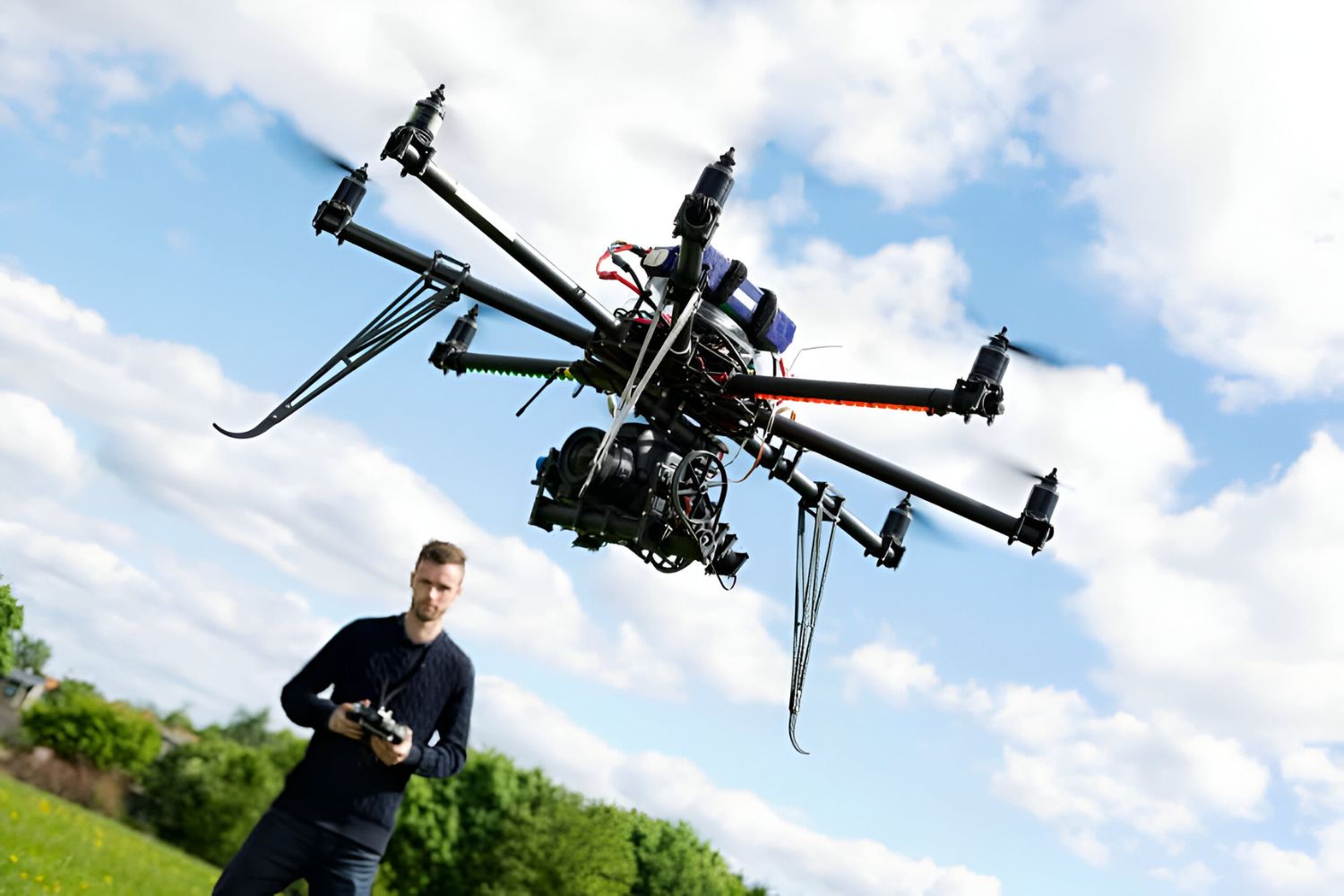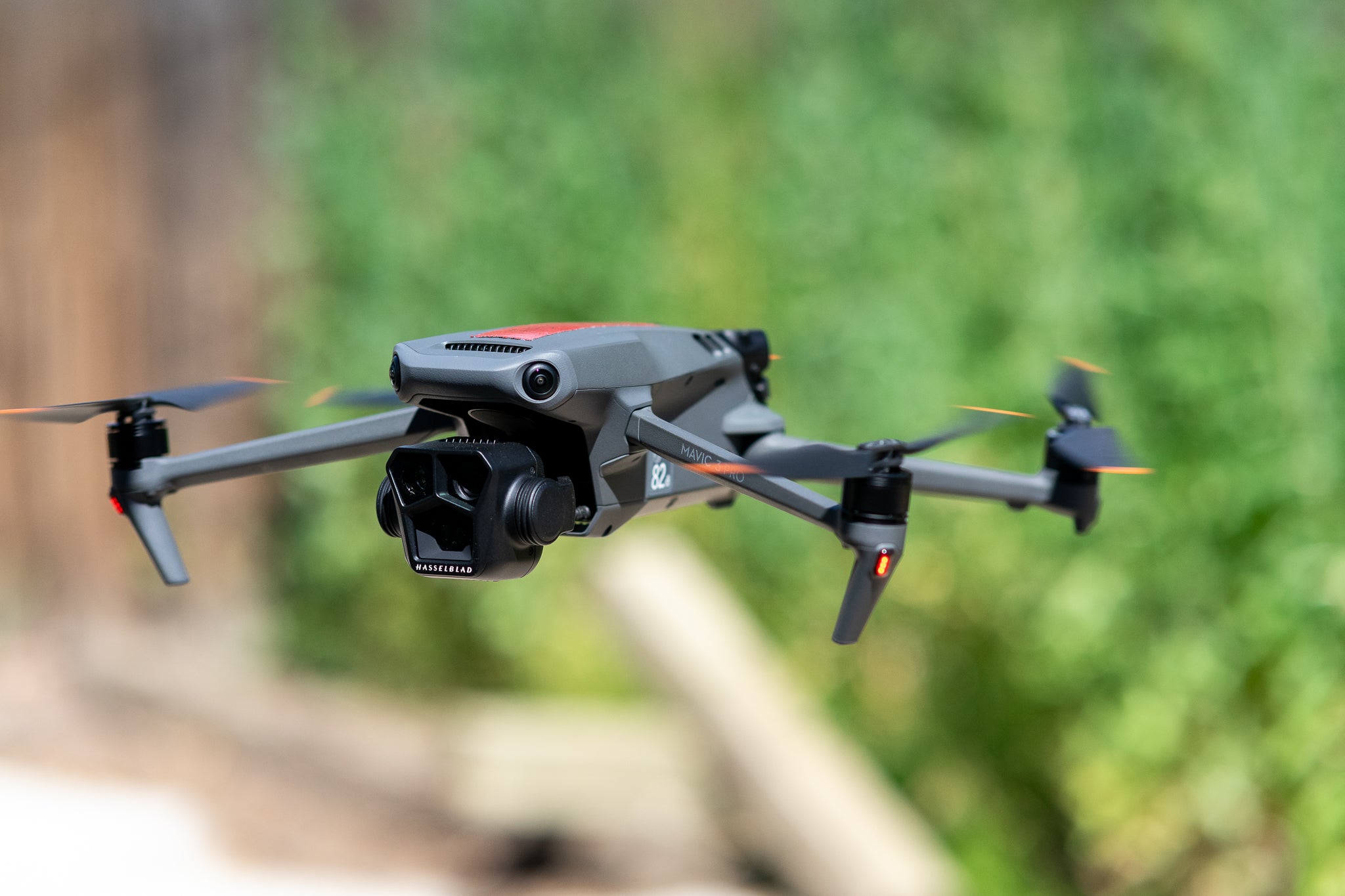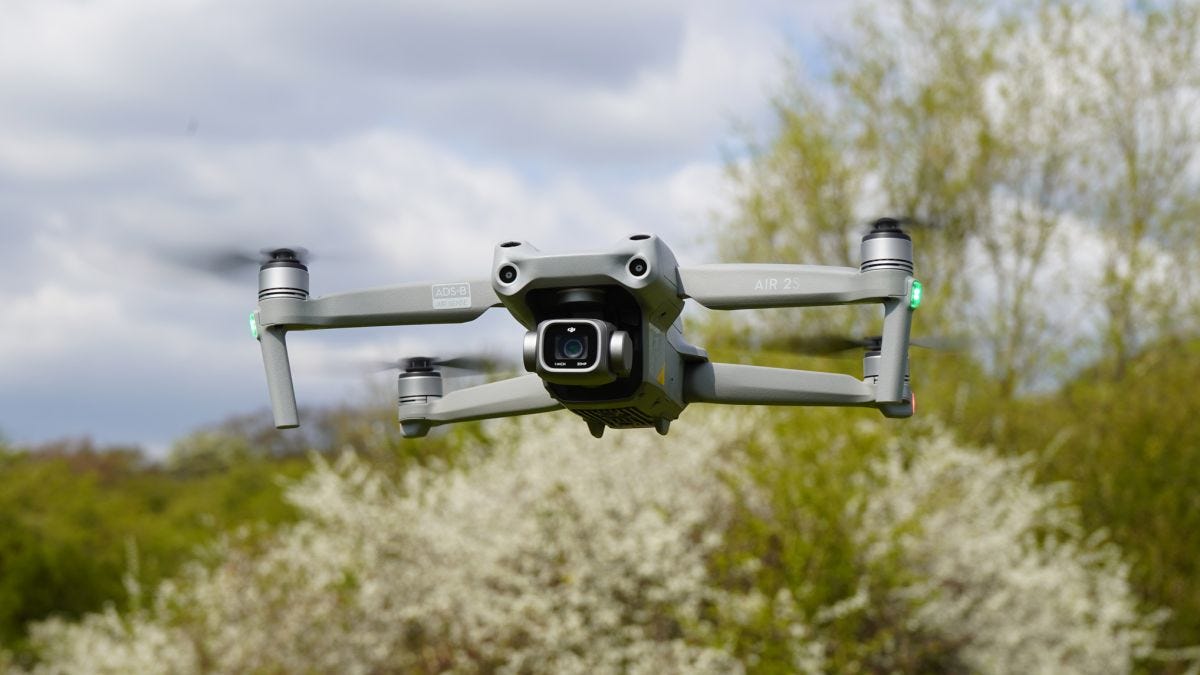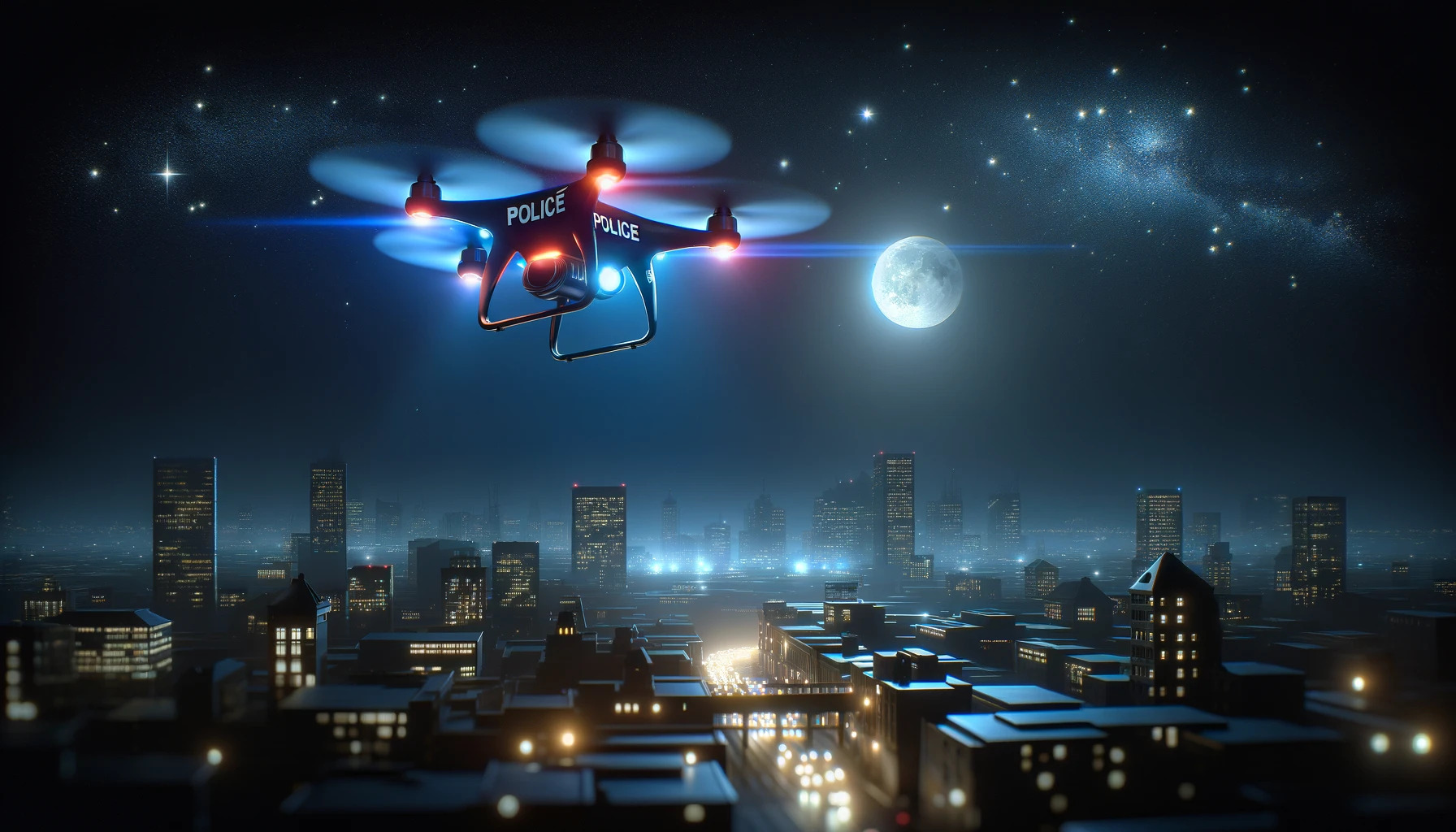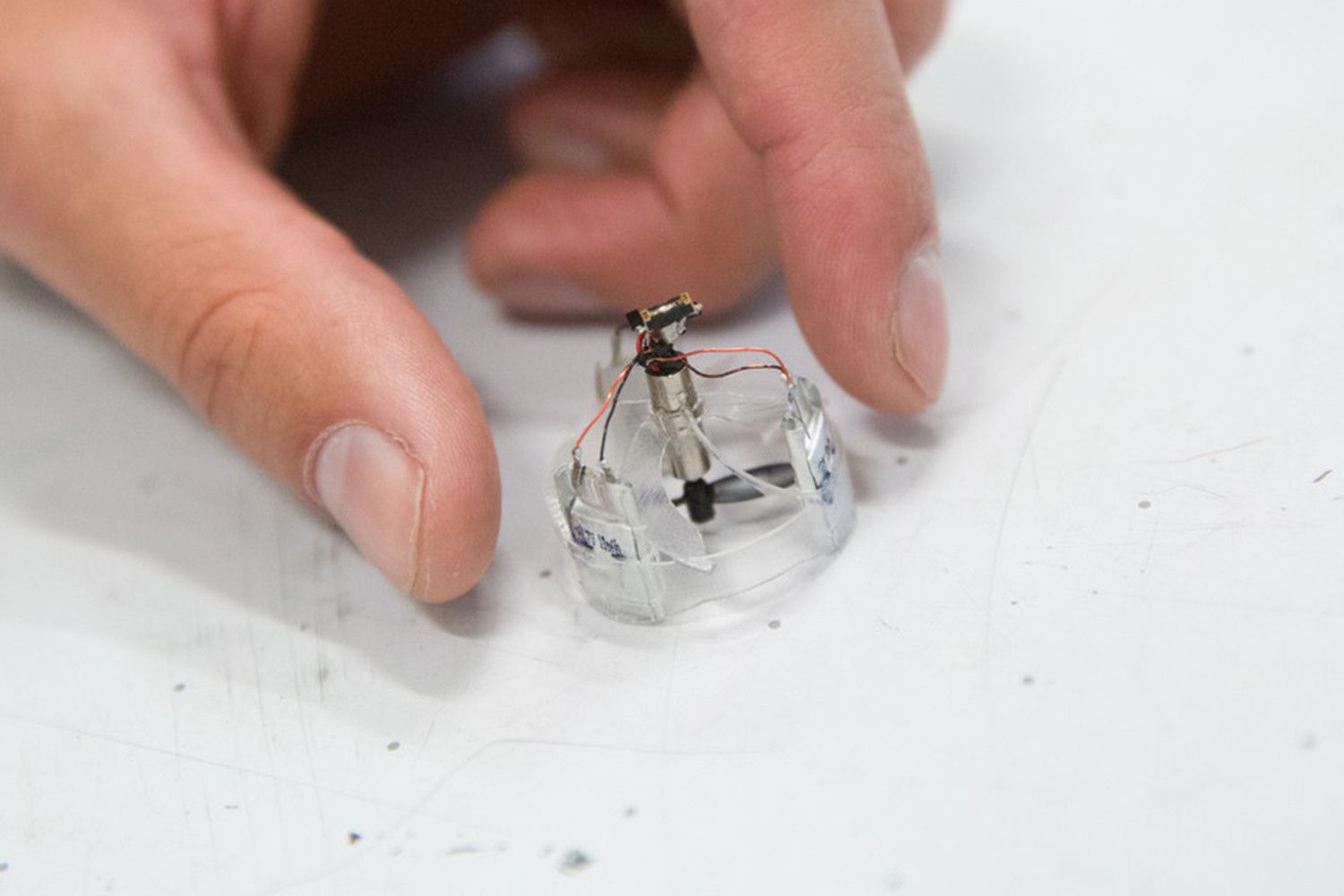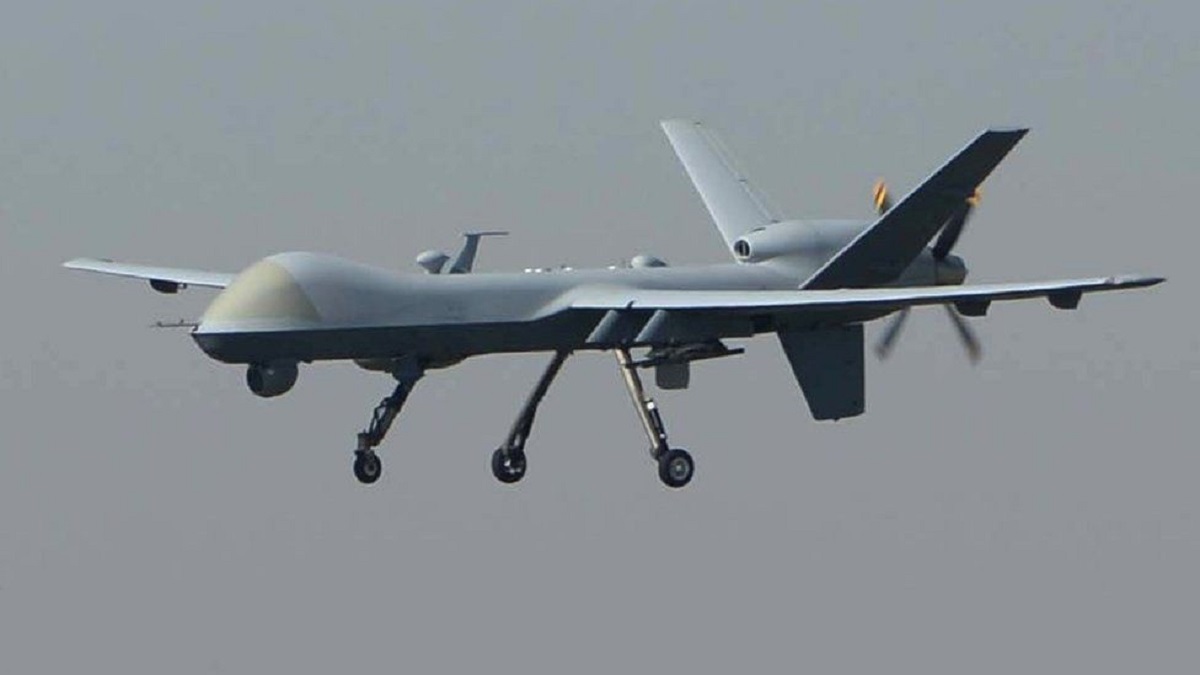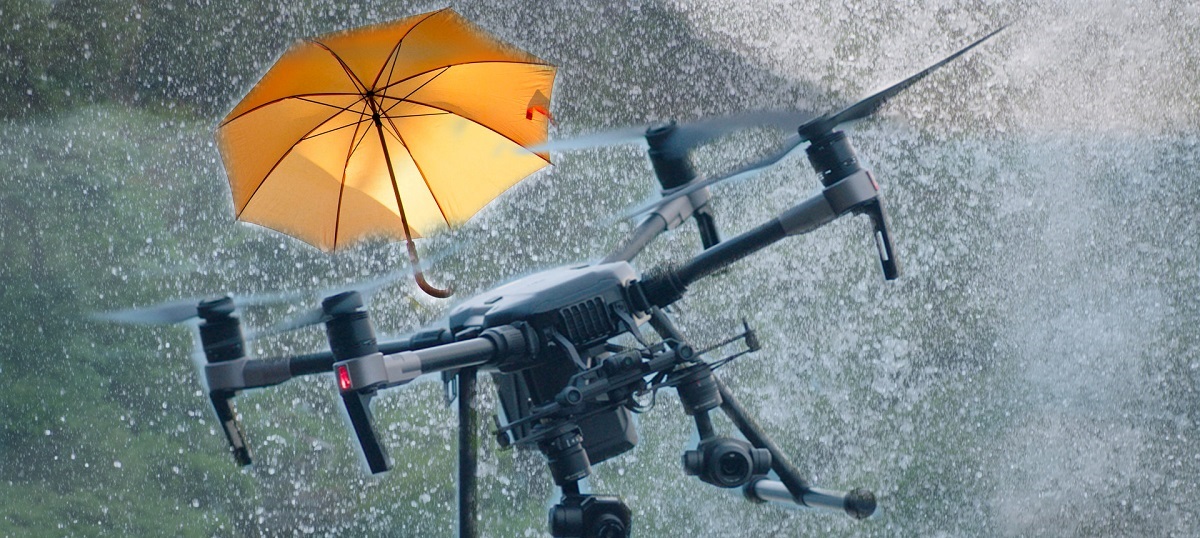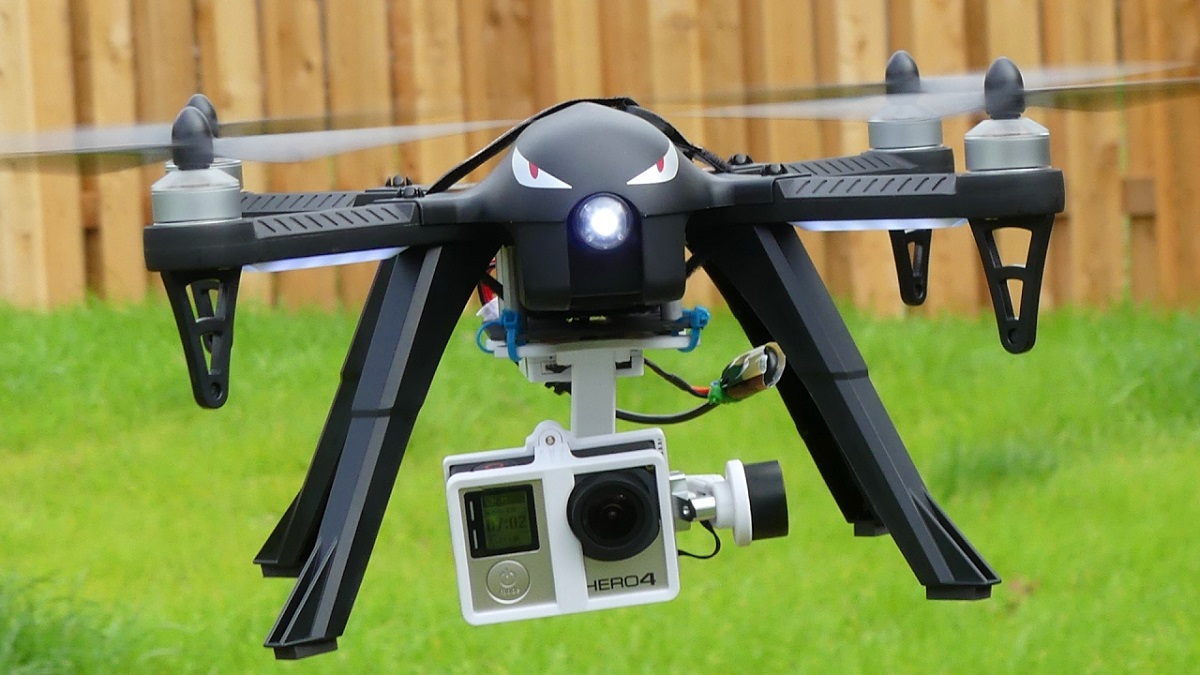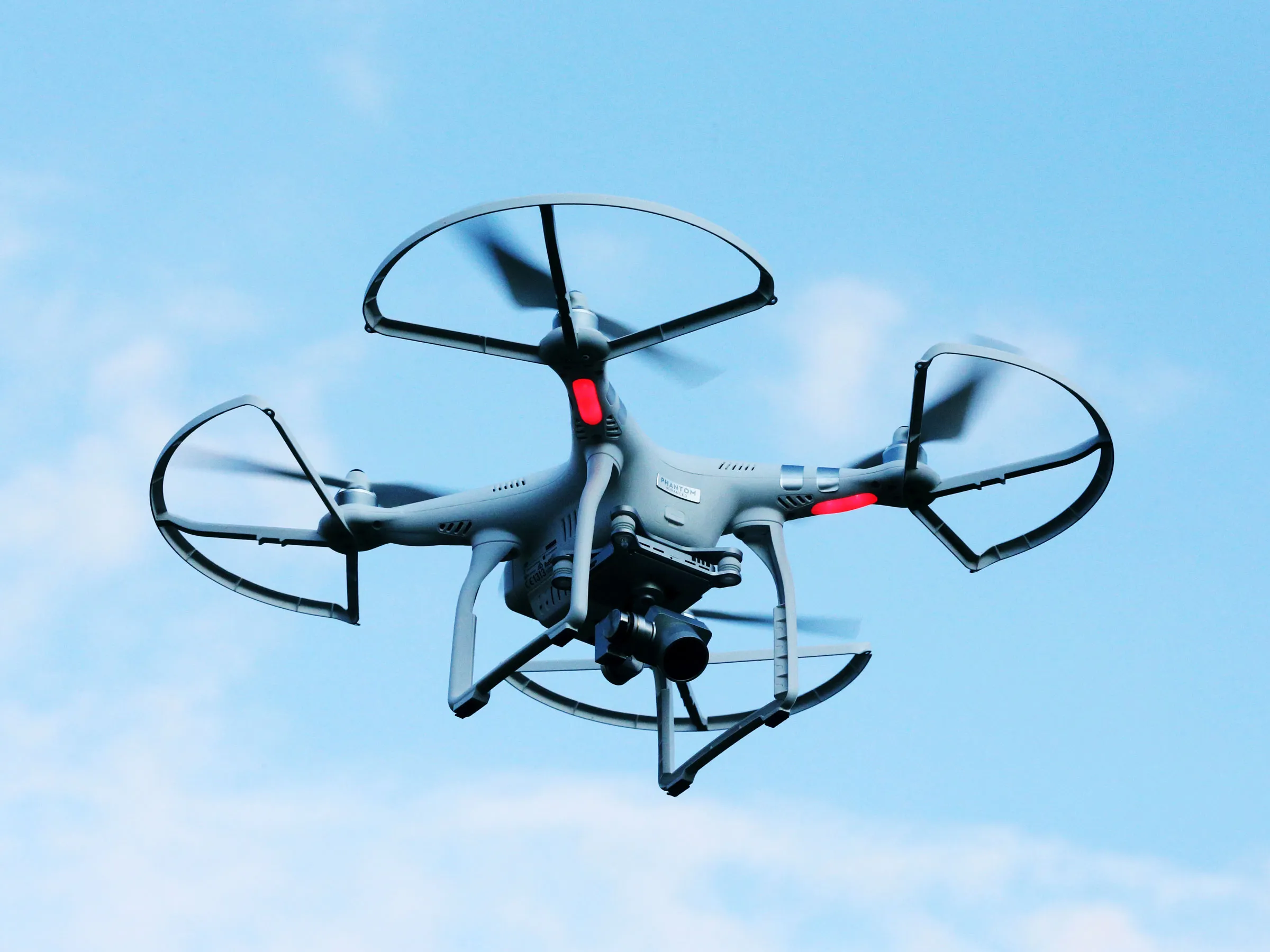Introduction
Welcome to the exciting world of camera drone operation! As technology continues to advance, the demand for skilled drone operators capable of capturing stunning aerial footage is on the rise. Whether you are an aspiring aerial photographer, videographer, or simply a drone enthusiast looking to turn your passion into a profession, this guide will provide you with valuable insights into becoming a proficient camera drone operator.
Operating a camera drone offers a unique perspective, allowing you to capture breathtaking images and videos from the sky. However, mastering the art of drone operation and aerial photography requires dedication, practice, and a solid understanding of both the technical and creative aspects of the craft.
Throughout this guide, we will explore the essential steps to kick-starting your journey as a camera drone operator. From selecting the right equipment and mastering flight techniques to honing your photography and videography skills, each aspect plays a crucial role in your development as a competent and sought-after professional in the field.
So, whether you dream of capturing stunning landscapes, filming action-packed sequences, or providing aerial surveying services, this comprehensive guide will equip you with the knowledge and tools necessary to embark on a rewarding career as a camera drone operator.
Getting Started in Camera Drone Operation
Embarking on a career as a camera drone operator requires a blend of technical expertise, creativity, and a deep passion for aerial photography and videography. Before delving into the intricacies of drone operation, it is essential to understand the foundational steps that will set you on the right path.
Educate Yourself: Begin by familiarizing yourself with the regulations and guidelines governing drone operation in your region. Understanding airspace restrictions, flight permissions, and safety protocols is crucial for operating drones legally and responsibly.
Invest in Training: Enroll in a reputable drone piloting course or seek guidance from experienced professionals. Acquiring the necessary skills and knowledge related to flight maneuvers, emergency procedures, and aerial photography techniques will lay a solid foundation for your career.
Choose Your Specialty: Determine your area of interest within the realm of aerial photography and videography. Whether it’s capturing cinematic aerial footage for film production, conducting aerial surveys for mapping and inspection, or documenting events from a unique perspective, identifying your niche will help shape your career trajectory.
Acquire the Right Equipment: Selecting the appropriate drone and camera setup is pivotal. Research and invest in a reliable drone equipped with a high-quality camera that aligns with your specific photography and videography needs. Consider factors such as flight time, camera resolution, and stabilization features when making your purchase.
Network and Collaborate: Engage with fellow drone enthusiasts, photographers, and videographers to build a network within the industry. Collaborating on projects, sharing knowledge, and seeking mentorship can provide valuable insights and opportunities for growth.
By laying a strong foundation through education, training, equipment selection, and networking, you will establish a solid footing as you venture into the captivating world of camera drone operation.
Choosing the Right Drone
When venturing into the realm of camera drone operation, selecting the right drone is a pivotal decision that significantly influences the quality of your aerial photography and videography endeavors. With a myriad of options available in the market, understanding the key factors to consider when choosing a drone is essential.
Camera Quality: The quality of the onboard camera is paramount. Look for drones equipped with high-resolution cameras capable of capturing crisp images and smooth, high-definition videos. Consider factors such as sensor size, lens quality, and video stabilization features to ensure optimal image and video output.
Flight Performance: Assess the drone’s flight capabilities, including stability, agility, and wind resistance. A reliable drone should offer stable flight performance, responsive controls, and the ability to withstand varying weather conditions, enabling you to capture smooth and steady aerial footage.
Battery Life and Range: Evaluate the drone’s battery life and operating range. Longer flight time and extended control range provide flexibility and endurance for capturing extensive aerial footage without frequent interruptions or limitations in exploration and creativity.
Portability and Durability: Consider the portability and durability of the drone, especially if you intend to travel with your equipment. A compact and sturdy drone that can withstand the rigors of outdoor use and transportation will facilitate seamless aerial photography and videography in diverse environments.
Advanced Features: Explore drones equipped with advanced features such as obstacle avoidance, intelligent flight modes, and automated camera settings. These features can enhance the efficiency and safety of your aerial operations while enabling you to capture complex shots with precision and creativity.
By carefully evaluating these factors and aligning them with your specific aerial photography and videography requirements, you can make an informed decision when selecting a drone that serves as a reliable and versatile tool for your creative pursuits in the skies.
Learning to Fly
Mastering the art of flying a camera drone is a fundamental skill that forms the cornerstone of your journey as a proficient drone operator. Whether you are a novice or have prior experience with drone flight, ongoing practice and skill development are essential for achieving precision, control, and confidence in the air.
Basic Flight Maneuvers: Begin by familiarizing yourself with basic flight maneuvers, including takeoff, landing, hovering, and controlling the drone’s orientation. Practice these maneuvers in open, obstacle-free spaces to gain a solid grasp of fundamental flight control.
Flight Simulators: Utilize drone flight simulators to hone your piloting skills in a virtual environment. Simulators provide a risk-free platform for practicing various flight scenarios, refining your control inputs, and familiarizing yourself with the drone’s responsiveness.
Understanding Flight Modes: Familiarize yourself with the flight modes and settings offered by your drone. Explore features such as GPS-assisted flight, altitude hold, and intelligent flight modes to leverage the drone’s capabilities for stable and precise aerial navigation.
Advanced Maneuvers and Techniques: Progress to mastering advanced flight maneuvers, including smooth and coordinated turns, altitude adjustments, and dynamic flight patterns. Refining these techniques will empower you to capture dynamic and visually captivating aerial footage with finesse.
Adhering to Safety Protocols: Prioritize safety during every flight session. Familiarize yourself with safety guidelines, airspace restrictions, and emergency procedures. Maintaining a safety-conscious approach is crucial for safeguarding yourself, your equipment, and the surrounding environment.
Continuous Practice: Dedicate regular practice sessions to refine your piloting skills and adapt to varying environmental conditions. Consistent practice not only enhances your proficiency as a drone pilot but also instills confidence in executing complex flight maneuvers and capturing stunning aerial imagery.
By embracing a structured approach to learning and mastering drone flight, you will develop the expertise and finesse necessary to maneuver your drone with precision, creativity, and a keen understanding of aerial dynamics.
Understanding Camera Settings
Mastering the intricacies of camera settings is paramount for harnessing the full potential of your drone’s onboard camera and capturing stunning aerial imagery and videos. A comprehensive understanding of camera settings empowers you to adapt to diverse lighting conditions, optimize image quality, and unleash your creative vision in the skies.
Exposure Control: Familiarize yourself with exposure settings such as aperture, shutter speed, and ISO. Understanding the interplay of these elements enables you to adjust exposure levels, freeze motion, and control the depth of field, ensuring well-exposed and visually compelling aerial shots.
White Balance and Color Profiles: Explore white balance settings and color profiles to achieve accurate color reproduction and maintain visual consistency across your aerial footage. Customizing these settings allows you to adapt to varying lighting conditions and achieve the desired color aesthetics in your images and videos.
Resolution and File Formats: Select the appropriate resolution and file format for your aerial content based on your intended use. High-resolution settings and raw file formats provide flexibility in post-processing and ensure optimal image quality for professional applications.
Focus and Autofocus Modes: Master the focus control options available on your drone’s camera. Whether utilizing manual focus or autofocus modes, understanding these settings is essential for achieving sharp and well-defined subject focus in your aerial photography and videography.
Camera Stabilization: Leverage the drone’s stabilization features and gimbal settings to ensure smooth and steady footage. Understanding and optimizing these settings play a crucial role in mitigating vibrations and maintaining stable camera orientation during flight, resulting in professional-grade aerial videos.
Custom Camera Functions: Explore additional camera functions such as HDR (High Dynamic Range), panorama modes, and interval shooting. These features offer creative possibilities for capturing breathtaking landscapes, dynamic scenes, and time-lapse sequences from a unique aerial perspective.
By delving into the nuances of camera settings and mastering their application in aerial photography and videography, you will elevate the visual impact of your drone-captured content, showcasing your creativity and technical proficiency in every captivating frame.
Mastering Aerial Photography and Videography
Embarking on the journey to master aerial photography and videography with your drone opens a realm of creative possibilities, allowing you to capture breathtaking imagery and compelling cinematic sequences from a unique vantage point. Elevating your skills in composition, storytelling, and technical execution is essential for delivering captivating aerial content.
Composition and Framing: Embrace the principles of composition to create visually engaging aerial shots. Explore techniques such as the rule of thirds, leading lines, and aerial perspective to craft compelling compositions that draw the viewer’s eye and evoke a sense of depth and scale.
Dynamic Camera Movements: Experiment with dynamic camera movements to add cinematic flair to your aerial videos. Utilize techniques such as dolly zoom, parallax shots, and revealing movements to infuse visual dynamism and narrative impact into your aerial storytelling.
Light and Golden Hour Shooting: Leverage the unique qualities of natural light, especially during the golden hour, to capture stunning aerial imagery. Understanding the interplay of light and shadow enhances the mood and visual allure of your aerial photographs, elevating them to a professional standard.
Storytelling through Aerial Footage: Embrace the art of visual storytelling by crafting compelling narratives through your aerial videos. Consider the sequence of shots, pacing, and thematic coherence to convey a captivating story that resonates with your audience.
Post-Processing and Color Grading: Refine your post-processing skills to enhance the visual impact of your aerial content. Experiment with color grading, contrast adjustments, and image sharpening to achieve a polished and professional look that accentuates the beauty of your aerial captures.
Aerial Cinematography Techniques: Dive into the realm of aerial cinematography by mastering techniques such as establishing shots, aerial tracking, and aerial reveals. These techniques add depth and cinematic grandeur to your videos, elevating the production value of your aerial cinematography projects.
By honing your skills in aerial photography and videography, you will not only capture stunning aerial imagery and videos but also carve a distinct artistic signature in the realm of drone-based visual storytelling, establishing yourself as a proficient and visionary aerial content creator.
Safety and Regulations
Operating a camera drone entails a responsibility to prioritize safety and adhere to regulatory guidelines, ensuring the well-being of individuals, property, and the airspace. Familiarizing yourself with safety protocols and adhering to drone regulations is imperative for conducting lawful and safe aerial operations.
Pre-flight Safety Checks: Prior to each flight, conduct thorough pre-flight checks on your drone, including propeller inspection, battery status, and control system verification. Ensuring that the drone is in optimal condition mitigates the risk of in-flight malfunctions.
Airspace Awareness: Familiarize yourself with airspace classifications and restrictions in your operating area. Adhering to designated flight zones and altitude limits preserves the safety of manned aircraft and mitigates the risk of airspace violations.
Weather Conditions: Monitor weather forecasts and assess environmental conditions before each flight. Avoid flying in adverse weather, such as strong winds, rain, or low visibility, to maintain control and stability during aerial operations.
Regulatory Compliance: Stay informed about drone regulations and flight requirements established by aviation authorities in your region. This includes registration, pilot certification, and adherence to specific operational limitations and flight permissions.
Emergency Procedures: Equip yourself with the knowledge of emergency protocols and contingency plans in the event of unexpected situations during flight. Understanding emergency landing procedures and response protocols enhances your preparedness to handle unforeseen circumstances.
Respect for Privacy and Ethics: Exercise discretion and respect for privacy when capturing aerial footage. Adhere to ethical guidelines and privacy laws, obtaining consent when filming individuals or private property to uphold ethical standards in your aerial content creation.
Community Engagement: Foster positive community relations by communicating with local authorities, property owners, and the public when planning drone operations in shared spaces. Open dialogue and collaboration contribute to a harmonious coexistence within the community.
By integrating safety consciousness, regulatory compliance, and ethical considerations into your drone operations, you uphold the integrity of the aerial industry, contribute to safe airspace utilization, and establish yourself as a responsible and conscientious drone operator.
Building Your Portfolio
As you progress in your journey as a camera drone operator, assembling a compelling portfolio of your aerial photography and videography work is pivotal for showcasing your skills, style, and versatility to potential clients and collaborators. Your portfolio serves as a visual narrative of your expertise and creative vision, leaving a lasting impression on those who view your work.
Diverse Aerial Content: Curate a diverse range of aerial content that highlights your proficiency in capturing varied subjects, landscapes, and visual narratives. Incorporate aerial photography showcasing natural scenery, urban landscapes, architectural marvels, and dynamic aerial videography sequences to demonstrate your versatility.
Quality Over Quantity: Prioritize quality over quantity when selecting content for your portfolio. Showcase your best and most visually compelling aerial captures, ensuring that each piece reflects your technical prowess, artistic sensibility, and attention to detail.
Storytelling and Cohesion: Arrange your portfolio to convey a cohesive visual narrative. Consider the flow and thematic coherence of your aerial content, presenting a collection that resonates with viewers and communicates your storytelling abilities through aerial imagery and videos.
Before-and-After Edits: When applicable, include before-and-after edits of your aerial images to demonstrate your post-processing skills and the transformative impact of your editing techniques. Showcasing the enhancement and refinement of raw aerial captures exemplifies your proficiency in elevating visual content.
Client Projects and Testimonials: Incorporate client projects and testimonials, if available, to provide a glimpse into your professional collaborations and the satisfaction of your clientele. Client testimonials and project case studies add credibility and authenticity to your portfolio.
Online Presence and Accessibility: Establish an online platform, such as a professional website or a dedicated portfolio gallery, to showcase your aerial work. Ensure that your portfolio is easily accessible and navigable, allowing potential clients and collaborators to explore your aerial content effortlessly.
Continual Updates and Refinement: Regularly update and refine your portfolio with your latest and most compelling aerial work. Embrace growth and evolution in your craft, consistently elevating the quality and diversity of your aerial portfolio to reflect your expanding skill set and artistic vision.
By meticulously curating and presenting your aerial portfolio, you not only demonstrate your proficiency as a camera drone operator but also establish a visual identity that resonates with clients, collaborators, and enthusiasts, paving the way for rewarding opportunities in the aerial industry.
Finding Job Opportunities
As a skilled camera drone operator, the pursuit of job opportunities in the dynamic field of aerial photography and videography requires strategic networking, proactive outreach, and a compelling presentation of your expertise. Whether seeking freelance assignments, collaborating with production companies, or exploring commercial projects, the following avenues can lead to fulfilling job opportunities in the industry.
Industry Networking: Engage in industry events, workshops, and networking gatherings to connect with professionals in the aerial photography and videography domain. Building meaningful relationships with fellow drone operators, photographers, filmmakers, and industry stakeholders can lead to valuable job prospects and collaborative ventures.
Online Platforms and Directories: Utilize online platforms and directories tailored to freelance professionals and creative talents. Joining reputable platforms specializing in aerial services and visual content creation can expose your skills to a broad clientele seeking drone-operated photography and videography.
Collaborative Projects: Seek collaborative projects with filmmakers, content creators, and production teams. Contributing your expertise to collaborative ventures, such as film productions, marketing campaigns, and creative projects, not only expands your portfolio but also opens doors to long-term partnerships and referrals.
Client Outreach and Proposals: Proactively reach out to potential clients and businesses that can benefit from aerial photography and videography services. Craft compelling proposals tailored to their specific needs, showcasing the value and impact of integrating drone-captured visuals into their projects and marketing initiatives.
Industry Associations and Forums: Join industry associations and online forums dedicated to aerial photography and videography. Participating in discussions, sharing insights, and staying updated on industry trends can lead to job opportunities, collaborations, and exposure to potential clients seeking drone-operated visual content.
Professional Portfolios and Online Presence: Leverage your professional portfolio and online presence to attract job opportunities. Ensure that your portfolio is easily accessible and showcases the breadth of your aerial work, serving as a compelling visual representation of your expertise to potential clients and collaborators.
Referrals and Testimonials: Cultivate positive client relationships to garner referrals and testimonials. Satisfied clients can become advocates of your services, referring you to their network and providing testimonials that enhance your credibility and desirability as a drone operator.
By actively pursuing job opportunities through strategic networking, proactive outreach, and a compelling presentation of your skills and portfolio, you can position yourself for a fulfilling career in the aerial photography and videography industry, where your talent and expertise contribute to captivating visual storytelling and impactful content creation.
Conclusion
Congratulations on embarking on the enriching journey toward becoming a proficient camera drone operator. Throughout this comprehensive guide, you have delved into the essential facets of mastering aerial photography and videography, from selecting the right equipment and honing your piloting skills to understanding camera settings and building a compelling portfolio. As you navigate the dynamic landscape of the aerial industry, remember that dedication, continual learning, and a passion for creativity are the cornerstones of your success.
By immersing yourself in the art of aerial content creation, you have unlocked the potential to capture breathtaking imagery and compelling cinematic sequences from a unique vantage point. Your journey as a camera drone operator is a fusion of technical expertise, artistic vision, and a commitment to safety and ethical practices, culminating in the creation of captivating visual narratives that resonate with audiences.
As you venture into the professional realm of aerial photography and videography, remember that your portfolio is a testament to your skills and creativity, serving as a visual narrative that showcases your proficiency to potential clients and collaborators. Through strategic networking, proactive outreach, and a compelling presentation of your expertise, you can position yourself for rewarding job opportunities and collaborative ventures in the industry.
Embrace growth, seek mentorship, and stay updated on industry trends and technological advancements as you carve your path in the aerial industry. Your dedication to mastering the art of drone operation and aerial content creation will not only lead to professional success but also contribute to the captivating visual storytelling that defines the modern landscape of visual media.
With your skills honed, your portfolio curated, and your passion ignited, you are poised to soar to new heights as a skilled and visionary camera drone operator, leaving an indelible mark on the aerial photography and videography industry.







